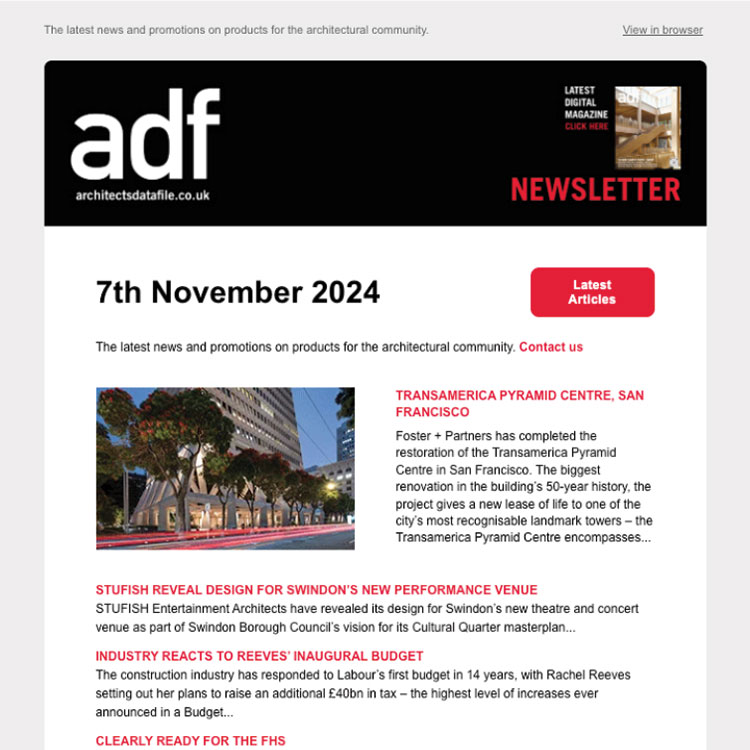According to industry reports, demand for roof tiles is considerably higher than supply. This causes projects to be delayed, which also impacts overall costs. In this article, Nigel Tozer of Cupa Pizarras explains how careful specification can avoid these issues.
Ensuring you specify products that will arrive to site on time depends on two things – the availability of the material chosen and the provenance of the manufacture. Selecting both carefully can avoid the headaches of delayed projects and unhappy end clients, but a well-informed selection will also add to the resilience of the roof and its ability to protect and insulate the building underneath.
Selecting quality materials
Natural slate is a sensible choice across all building types and classes. Its high density makes it waterproof and resistant to adverse weather conditions, and its non-combustibility protects the building from fire damage. Moreover, it is a low-maintenance option with natural slate roofs lasting hundreds of years. In terms of aesthetics, a natural slate roof adds real character to both modern and heritage style builds, creating a striking finish that has the added benefit of being non-conducive to unsightly fungus or mould growth.
With some natural slate suppliers being unable to meet the demand, some have turned to cheaper alternatives such as concrete, clay or man-made tiles. The motivation behind this is generally due to budget restrictions, rather than a conscious aesthetic decision.
With concrete, the initial price may seem smaller but in fact the long-term costs are greater. Concrete weighs approximately twice as much as natural slate, plus it has a shorter lifecycle. Therefore it isn’t just labour costs that increase, the end client can also expect to pay for re-roofing up to two times before they would need to for a natural slate roof.
Clay tiles also need replacing frequently, although their water absorption rate is around 6% and therefore they develop less mildew than concrete. When it comes to strength and resilience there really is no comparison to natural slate – clay tiles crack and shatter easily in colder climates and slate simply outlives the alternatives.
For those taking a keen interest in sustainable architecture, they will also want to avoid clay because of the harmful environmental impact it has during the production process. Being kiln fired, a substantial amount of energy is used and carbon dioxide is released. What’s more, as a mineral product that is subject to a simple production process, slate is deemed to be the most sustainable choice of material for any roofing project. There are no artificial chemicals or additives involved and only water is used to keep the slate wet during production.
Lastly, fibourous, asphalt or ‘fake slate’ as it is known, can cause real issues with maintenance. They are often double nailed and clipped at the bottom so when they become brittle with age and break easily, small repairs often become trickier because of how fragile the material has become. Although for some, the look of fake slate is almost indistinguishable from natural slate, it does not work with nature in the same way. For the trained architectural eye, there is a clear difference; the position of the building in relation to water and its exposure to light can bring astonishing results with natural slate tiles in relation to colour movement throughout the day.
The importance of provenance
With concrete, clay and man-made roofing products it can be difficult, if not impossible, to trace them to their origins. Architects and specifiers have a responsibility to make informed product choices, which means considering how the tile is processed as well as how it performs and looks. To avoid quality issues and guarantee supply, it is advised to work with well-established manufacturers that offer advanced traceability.
For example,Cupa Pizarras is celebrating its 125-year anniversary this year, following the extraction of its first slate from the Solana de Forcadas quarry in Northern Spain in 1892. This significant milestone positions the company as one of the most reputable provider of natural slate, capable of meeting demands.
Furthermore, many suppliers offer a basic level of traceability. In comparison, Cupa Pizarras delivers every pallet with its own unique barcode. Being able to pinpoint the exact history of the tile – from the quarry to the warehouse manager on duty the day it was extracted – can become invaluable in securing projects. By providing very specific slate selections the architect can offer a uniform solution for all roofing phases of a large development but it also provides a guarantee of product availability, so it pays to choose a company that is involved with every stage of the supply chain process.
The variation of colour shades – from blue/black to dark grey – coupled with the unique character and ability to adapt to modern and traditional buildings – makes natural slate an incredibly popular choice for architects. Although suppliers struggle to meet the demands of the market, the so-called cheaper alternatives simply do not match the durability and quality of natural slate or the long-term cost savings. Therefore opting for natural slate, supplied by a reputable manufacturer with a competitive traceability offering, can ensure projects are kept to both budgetary and time restrictions.


